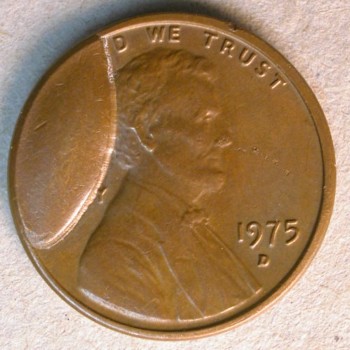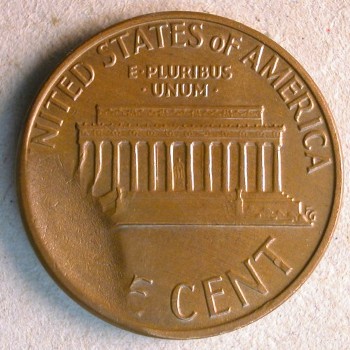Part IV. Die Errors:
Die Breaks
Definition: A die break is a form of brittle failure in which a piece of the die face breaks off and falls out. Mint workers call this kind of defect a “piece-out”. Tiny die breaks tend to form within narrow interstices of the design. When not connected to the rim, such tiny die breaks are referred to as “die chips”.
The vast majority of large die breaks occur at the die’s margin. The sharp junction between die neck and die face is particularly prone to failure. Any die break that involves the rim and at least a little bit of the field is called a “cud”.Most die breaks represent cases of spontaneous brittle failure. A small minority of die breaks arise as the result of impacts. The latter are often accompanied by signs of die damage in the intact portion of the die face.


This 1975-D cent shows a large cud (marginal die break) on the left side of the obverse face. As with all large die breaks, the area directly across from the die break on the opposite face is sunken-in. When the coin is struck, metal bulges into the void in the die face and simultaneously retreats from the intact die.